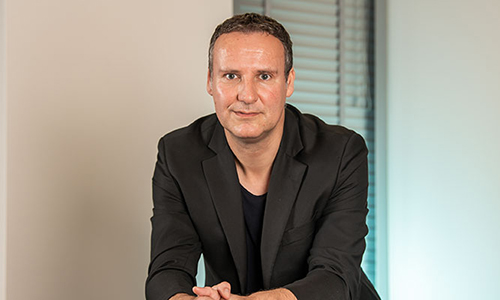Sustainable Solutions for Electricity Markets
In 2020, Professor Stefan Trueck of Macquarie Business School’s Centre for Risk Analytics was awarded the highly prestigious ARC Future Fellowship

With total funding from the ARC of $914,503, this is the first Future Fellowship for Macquarie Business School.
Trueck’s project, ‘Financial Innovation and Sustainable Solutions for Electricity Markets’, will undertake an economic analysis of energy markets. By examining the transition of electricity markets from fossil fuel-fired power generation to a higher share of renewable energy – and by considering the use of new financial products for funding clean energy – Trueck’s project will build strategies towards guaranteeing the economic sustainability of the sector. This will decrease the associated cost flow-on to electricity end-users.
Australian wholesale electricity prices are among the highest and most volatile in the developed world. Yet today, electricity sectors around the world are being radically transformed. An industry with traditionally high carbon emissions, electricity generation globally is rapidly moving to a higher share of renewable production. This environmental progress is great news, yet it also carries significant challenges. Trueck’s project will investigate how financial markets and instruments can facilitate this transformation while remaining economically viable.
For example, there’s the concrete reality and sector specificities of production. Coal-fired generators have the capacity to operate 24/7 and continuously produce electricity. With alternative energy sources, this isn’t the case. For wind farms, ‘the wind blows when the wind blows, and not necessarily when we need electricity from wind,’ observes Trueck wryly. Solar is a bit more predictable, but there’s still a variability.
Ok, so we know we need more energy generation from renewables, but how do we also meet demand? How can we guarantee a reliable supply of electricity at a reasonable price? How can we prepare for periods of production downturn while maintaining a viable market?
To investigate these questions, Trueck has divided his project into different components:
- Explore how financial instruments can help to further increase the integration of electricity generation from renewables . For example, Trueck and his team will look at ways to make it easier for households and businesses to increase their use of energy from solar PV. The installation of solar panels in combination with a battery might be costly. However, power purchase agreement schemes are available that can provide consumers with free installation, with the cost slowly repaid through consumption. With the right pricing structure, this means that everyone comes out ahead. A financial institution could also think about pooling together a high number of these power purchase agreements and offer this product on financial markets, providing investors with the opportunity to invest in renewable energy-related green bonds.
- Fair pricing of renewable output and storage to facilitate the fair exchange of generated electricity to retailers. In the past, contracts have been structured at set prices for a fixed volume of electricity exchanged – say, for example, $50 for each MWh of electricity over a period of three months. In the context of renewables, where it is impossible to know how much energy will be generated and when, this cost structure is not feasible. So better methods for pricing intermittent and unpredictable output from renewable generators need to be developed. With this line of thought, it will also become important to accurately price the storage of electricity, for example through battery power plants.
- Address market challenges that arise from unpredictable generation. With renewables, sometimes too much electricity is produced, and sometimes not enough. Trueck’s work will explore the quality indicators of electricity markets – reliability, market concentration, price behaviour, bidding behaviour of generators, electricity flows between regions, spillover effects – to establish metrics in an international context to see where Australia stands.
- Develop ‘stress tests’ to guarantee viability. Stress tests are often used by banks and financial institutions to test whether they are protected against unforeseen severe market events or crises periods. Applying similar tests to the electricity sector is an innovative approach and has hardly been done in academic or practical work. Trueck and the team will model possible scenarios to simulate adverse conditions in the energy sector to extrapolate outcomes. For example, if a major plant needs to endure closure for a period of time, or if there’s not much wind or the sun isn’t shining, what will happen? How will this impact on spot electricity prices, the income or financial loss of retailers, and how will it affect consumers?
Trueck’s project will develop and deliver new techniques and research infrastructures for the analysis of electricity markets. Trueck says, ‘this is complex econometric research with high applicability and clear national benefit to make electricity markets better for everyone. That’s why it was funded.’
The fellowship will allow Trueck to work with an excellent research team and partners from academia, regulatory bodies and industry. ‘I believe that the project will help to answer key questions and provide solutions for some pressing problems in electricity markets,’ he says. This will enhance the long-term reliability of the electricity sector and viability of Australia’s industries.